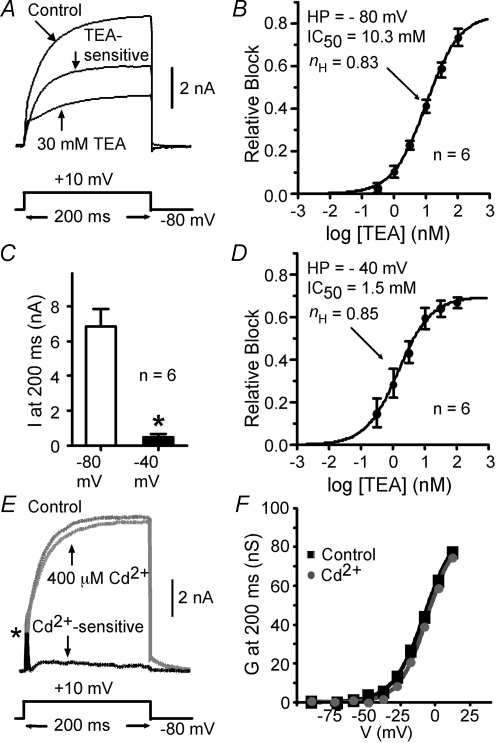Figure 3.
TEA, Cd2+ and holding potential sensitivities of the outward K+ currents α-DTX and MgTX were used in all external solutions to exclude the currents associated with Kv1 channels. Data are presented as mean ± s.e.m.A, example of the K+ current recorded from a holding potential of − 80 mV. 30-mM TEA inhibited a large, slowly activating current component. B, the dose–response relationship for TEA inhibition from holding potential of −80 mV. Over 80% of the outward K+ current was TEA sensitive, with an IC50 of 10.3 mm. nH, Hill coefficient. C, when the holding potential was changed to −40 mV from −80 mV, most outward K+ current was inactivated. *Statistical significance (P < 0.05). D, from a holding potential of −40 mV, the small, non-inactivated, outward K+ current was TEA sensitive, with an IC50 of 1.5 mm. E, representative traces for currents in response to a voltage step to +10 mV in control solution (Cd2+-free) and in the presence of 400 μm Cd2+. The subtracted record (black trace) shows that the fast, transient A current (*) was almost eliminated while the slowly inactivating current was only modestly affected by Cd2+. F, plot of conductance (G) at 200 ms versus the voltage step indicates that the voltage dependence of activation was little affected by Cd2+ (grey trace; protocol as in Fig. 5C).

